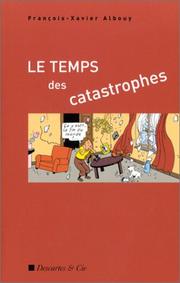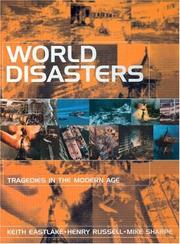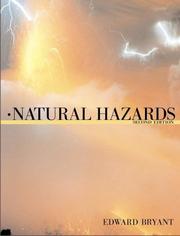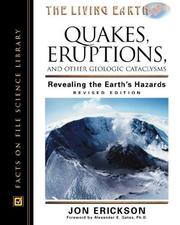| Listing 1 - 10 of 345 | << page >> |
Sort by
|

ISBN: 9782844460370 2844460372 Year: 2002 Publisher: Paris: Descartes,
Abstract | Keywords | Export | Availability | Bookmark
 Loading...
Loading...Choose an application
- Reference Manager
- EndNote
- RefWorks (Direct export to RefWorks)
Book
ISBN: 2757851292 9782757851296 Year: 2015 Publisher: Paris: Seuil,
Abstract | Keywords | Export | Availability | Bookmark
 Loading...
Loading...Choose an application
- Reference Manager
- EndNote
- RefWorks (Direct export to RefWorks)
Petite métaphysique des tsunamis Comment penser le mal au XXIe siècle ? Le tsunami du 26 décembre 2004 et la commémoration en 2005 de trois grandes catastrophes qui ont marqué l'Occident dans sa manière de se représenter le mal–Auschwitz ; Hiroshima et Nagasaki ; le tremblement de terre de Lisbonne de 1755–mettent à l'épreuve la pensée de la catastrophe. Le mal «naturel» est-il contingent ? L'homme est-il responsable du mal ? Ne plus évoquer le mal qu'en termes d'atteintes à l'ordre naturel du monde augure mal de notre capacité à faire face aux catastrophes futures.

ISBN: 9781579583187 1579583180 Year: 2001 Publisher: London: Fitzroy Dearborn,
Abstract | Keywords | Export | Availability | Bookmark
 Loading...
Loading...Choose an application
- Reference Manager
- EndNote
- RefWorks (Direct export to RefWorks)

ISBN: 0521537436 9780521537438 0511080980 131609880X 051117098X 0511555644 1280414782 0511196563 0511080220 Year: 2005 Publisher: Cambridge: Cambridge university press,
Abstract | Keywords | Export | Availability | Bookmark
 Loading...
Loading...Choose an application
- Reference Manager
- EndNote
- RefWorks (Direct export to RefWorks)
Book
ISBN: 2228888206 9782228888202 Year: 1995 Publisher: Paris: Payot,
Abstract | Keywords | Export | Availability | Bookmark
 Loading...
Loading...Choose an application
- Reference Manager
- EndNote
- RefWorks (Direct export to RefWorks)

ISBN: 081604516X 9780816045167 Year: 2001 Publisher: New York (N.Y.): Facts on file,
Abstract | Keywords | Export | Availability | Bookmark
 Loading...
Loading...Choose an application
- Reference Manager
- EndNote
- RefWorks (Direct export to RefWorks)
Periodical
ISSN: 05667690 Year: 1975 Publisher: Paris: Unesco Press,
Abstract | Keywords | Export | Availability | Bookmark
 Loading...
Loading...Choose an application
- Reference Manager
- EndNote
- RefWorks (Direct export to RefWorks)
Book
ISBN: 9781137294258 1137294256 Year: 2015 Publisher: Houndmills: Palgrave MacMillan,
Abstract | Keywords | Export | Availability | Bookmark
 Loading...
Loading...Choose an application
- Reference Manager
- EndNote
- RefWorks (Direct export to RefWorks)
Book
ISBN: 9780198841340 0198841345 Year: 2020 Publisher: Oxford: Oxford university press,
Abstract | Keywords | Export | Availability | Bookmark
 Loading...
Loading...Choose an application
- Reference Manager
- EndNote
- RefWorks (Direct export to RefWorks)
"Wildfires sweep parts of California and many lose their lives and their homes. Haiti has yet to recover from the devastation of the 2010 earthquake, while work still continues to make safe the Fukushima nuclear plant in Japan, damaged badly by the tsunami of 2011. We point to the powerful forces of nature, but these disasters are not natural, argues Ilan Kelman. They are, to a large degree, created by human choices. What choices? Made by whom? Who is most vulnerable? And what factors play a role in creating those vulnerabilities? These are the questions addressed in this compelling exploration of how 'natural' disasters are made - and how, through forward-looking approaches, they have been, and can be, avoided"--
Book
ISBN: 1138058416 1138352217 9781138352216 9781138058415 Year: 2019 Publisher: London: Routledge,
Abstract | Keywords | Export | Availability | Bookmark
 Loading...
Loading...Choose an application
- Reference Manager
- EndNote
- RefWorks (Direct export to RefWorks)
| Listing 1 - 10 of 345 | << page >> |
Sort by
|

 Search
Search Feedback
Feedback About UniCat
About UniCat  Help
Help News
News